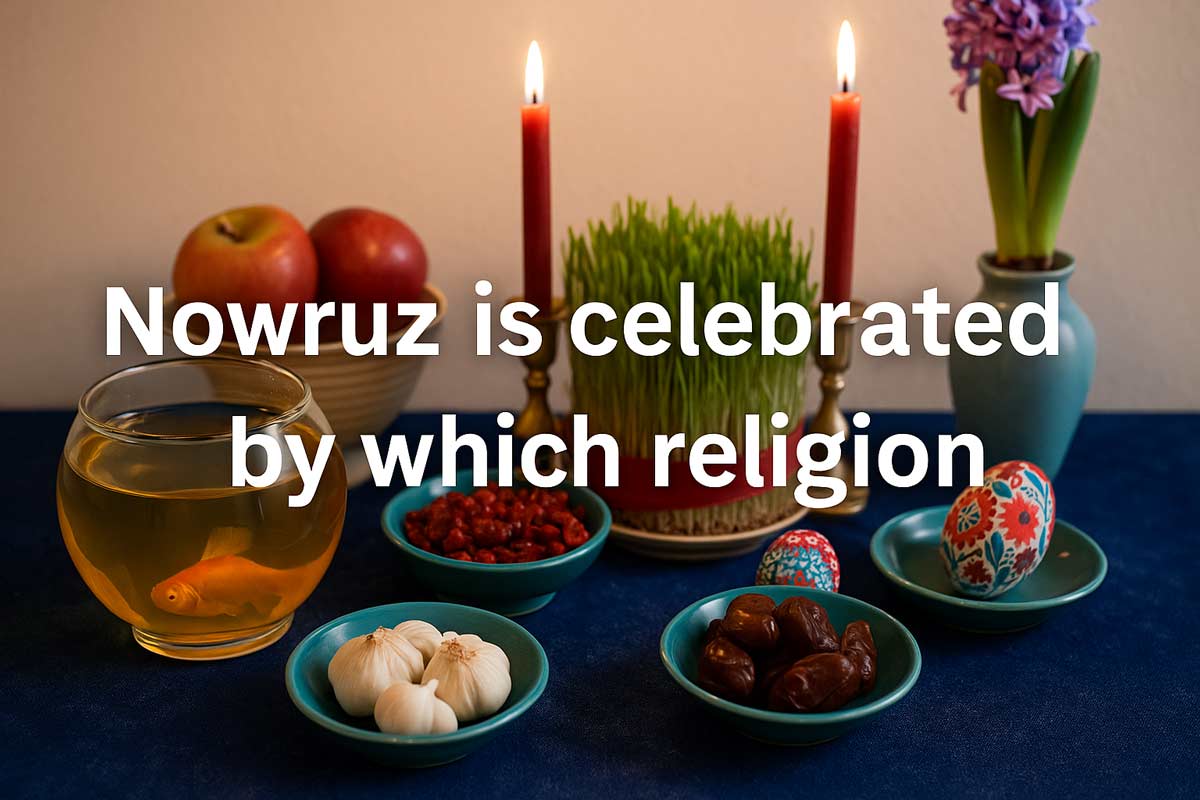Nowruz, also spelled as Norooz, marks the Persian New Year and is one of the oldest continuously celebrated holidays in the world. Rooted in the rhythms of nature and the spring equinox, it has a rich legacy that spans over 3,000 years. But many ask: Nowruz is celebrated by which religion? The answer is layered, involving not just one religion but several faiths, cultures, and communities across time and geography.
In this comprehensive article, we’ll explore the religious, cultural, and historical context of Nowruz, identifying the religions that honor it, the way it fits into their spiritual calendars, and why it continues to be relevant today.
Origins of Nowruz: Before Religion Took Shape
Before we discuss religion, we need to understand that Nowruz predates the major Abrahamic religions. Its earliest roots can be traced to ancient Persia (modern-day Iran), where it was deeply connected to agricultural cycles and the celebration of the vernal equinox.
The name “Nowruz” means “new day” in Persian and represents renewal, rebirth, and the victory of light over darkness—deeply symbolic concepts that eventually found a place in religious ideologies.
Zoroastrianism: The First Religion to Embrace Nowruz
If we must answer the question “Nowruz is celebrated by which religion?” in the most direct way, the first clear religious adopter is Zoroastrianism.
What is Zoroastrianism?
Founded by the prophet Zarathustra (Zoroaster) over 3,000 years ago, Zoroastrianism was the state religion of the ancient Persian empires including the Achaemenid, Parthian, and Sassanian dynasties.
Nowruz became a major celebration in the Zoroastrian calendar. It is associated with the concept of asha (truth, order, righteousness) and frashokereti (renewal and rebirth). Zoroastrians today still celebrate Nowruz with rituals involving fire, spring cleaning, and the Haft-Sin table.
Zoroastrian Nowruz Traditions:
- House cleaning (symbolizing purification)
- Setting the Haft-Sin table
- Lighting candles and fires
- Prayers at temples
- Charshanbe Suri (fire-jumping festival before Nowruz)
Islam and Nowruz: A Complex Relationship
Islam, which became dominant in Persia after the 7th century, had a nuanced relationship with Nowruz. Since Nowruz is not Islamic in origin, early Islamic scholars debated whether it should be practiced.
Sunni Islam:
Some Sunni scholars discouraged Nowruz, labeling it a pre-Islamic custom. However, in many Sunni-majority regions like Kurdistan and parts of Afghanistan, Nowruz is widely celebrated as a cultural rather than religious event.
Shia Islam:
In contrast, Shia Islam, especially in Iran, embraced Nowruz more openly. Prominent Shia clerics and theologians have historically supported the celebration. Today, in the Islamic Republic of Iran—a Shia-majority nation—Nowruz is the official new year.
Even in Islamic tradition, some Shia hadiths mention blessings or important events occurring on Nowruz, although these are not universally recognized across all Muslim scholars.
Nowruz in the Baha’i Faith
Another direct and religious observance of Nowruz exists within the Baha’i Faith, a religion that originated in 19th-century Persia.
Nowruz in the Baha’i Calendar:
For Baha’is, Nowruz is not just a cultural festival—it is a religious holy day. It marks the end of the 19-day Baha’i fast and the beginning of the new Baha’i year. The date aligns with the spring equinox and emphasizes spiritual renewal.
Baha’i Nowruz Practices:
- Communal prayers and gatherings
- Breaking the fast together
- Joyful celebration of unity and new beginnings
Other Religions and Ethnic Traditions
Although Nowruz isn’t a religious obligation in most other faiths, many ethno-religious communities observe it due to cultural heritage.
Yarsanism and Yazidism:
- Followers of Yarsanism (Ahl-e Haqq) and Yazidism in parts of Iraq, Iran, and Turkey celebrate Nowruz as a holy occasion with spiritual and cultural dimensions.
Christianity:
- Some Armenian Christians in Iran and Central Asia join in the Nowruz festivities, especially in mixed communities.
Judaism:
- Iranian Jews, who have lived in the region for over 2,700 years, also partake in Nowruz as a cultural event rather than a religious one.
Secular & Multi-Religious Societies:
- In countries like Tajikistan, Uzbekistan, Kazakhstan, and Azerbaijan, Nowruz is celebrated across religious lines, including by Muslims, Christians, and secular citizens alike.
UNESCO and Nowruz: A Global Cultural Heritage
In 2010, UNESCO recognized Nowruz as an Intangible Cultural Heritage of Humanity, acknowledging its significance across borders and belief systems. This move cemented Nowruz’s identity not just as a religious celebration but as a global human tradition.
Nowruz Today: Spiritual, Cultural, or Both?
So, Nowruz is celebrated by which religion?
- Zoroastrianism: Yes, officially and historically
- Baha’i Faith: Yes, as a religious holy day
- Shia Islam: Supported culturally and theologically, especially in Iran
- Sunni Islam: Celebrated in many regions culturally, though not universally endorsed
- Other faiths: Often celebrated culturally, especially in multi-religious societies
In essence, Nowruz is multi-religious and multi-cultural. While it has clear religious significance for Zoroastrians and Baha’is, it has been embraced culturally by millions from other faiths.
Conclusion: The Power of a Shared Celebration
What makes Nowruz unique is its unifying force. It’s a time when people, regardless of religion or nationality, come together to welcome a new beginning. Fire, light, water, and greenery become universal symbols of hope, peace, and renewal.
In a world that often emphasizes difference, Nowruz reminds us of what we share: the desire to start fresh, to grow, and to celebrate life.
So next time someone asks, “Nowruz is celebrated by which religion?”—you can confidently answer:
It began in Zoroastrianism, became sacred in the Baha’i Faith, and is cherished across many faiths and cultures worldwide.
Happy Nowruz—no matter your belief!

